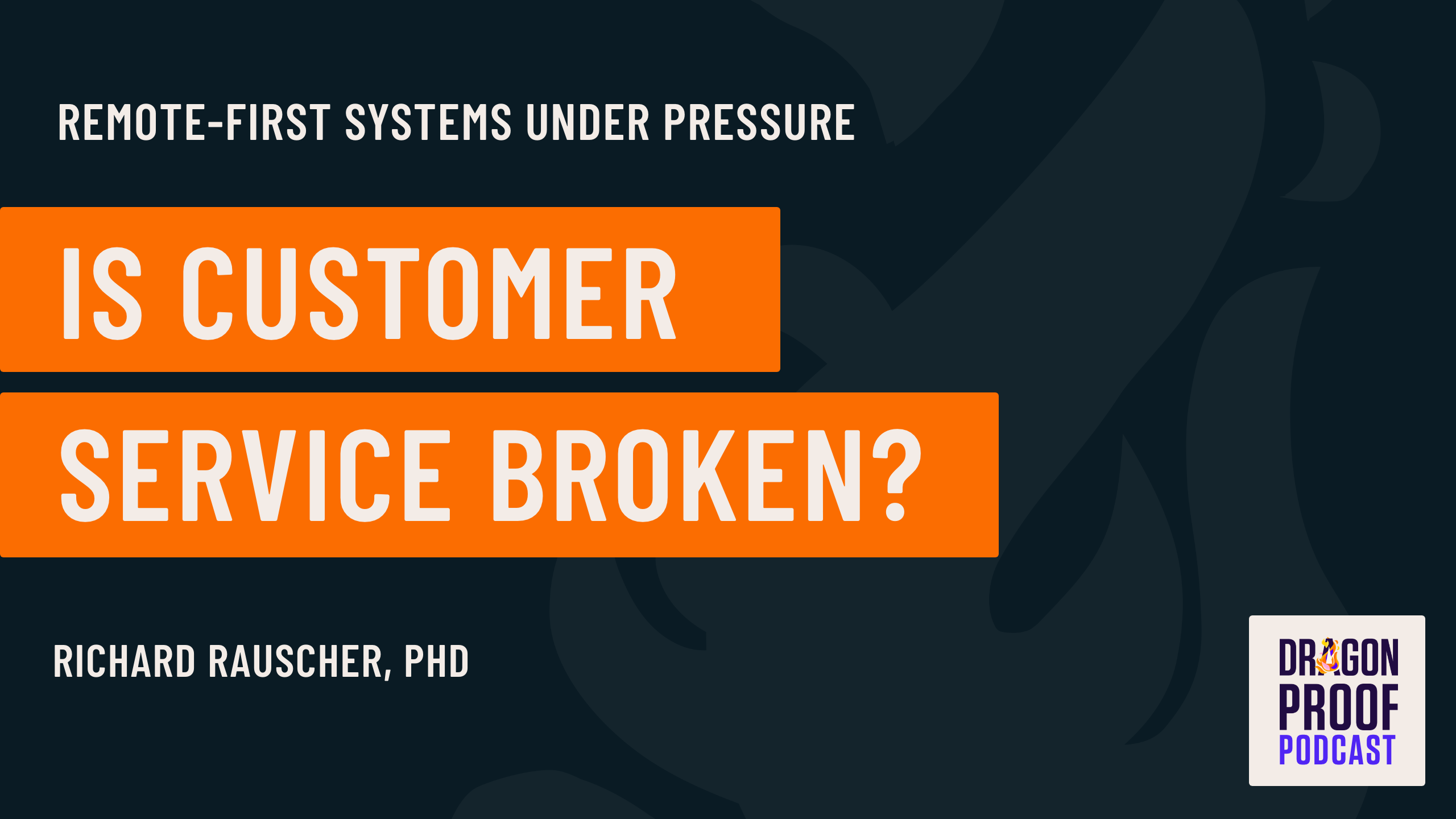By Miva | April 21, 2022

See why top ecommerce brands use Miva’s no-code platform to run
multiple stores, manage massive catalogs, and grow their revenue.
New podcast: "Is Customer Service Broken? How Remote-First Systems are Performing Under Pressure, with Rich Rauscher, PhD"
As hybrid and remote-first businesses increasingly become the norm, customer service systems which were designed for traditional in-person workplaces may be showing some strain. Customers across industries are experiencing extreme wait times, a lack of human interaction, and over-automation which can leave customers stuck repeating questions to chatbots which are not equipped to provide specific answers.
Miva Executive Vice President and master IT architect Richard Rauscher spoke with Rick Wilson about the unique pressures and performance of customer service systems after the two year stress test of Covid.
The rise of ecommerce since 2020 has resulted in a significant boost in demand and traffic across the world, as customers across industries are increasingly purchasing online. Simultaneously, a massive reduction in the available labor pool has resulted in less time for employee training, with more traffic/backlog that must be addressed faster. Add supply chain breakdowns into the mix, and businesses are suddenly experiencing a higher volume of customer service needs than can be well-managed.
Richard Rauscher, a computer scientist who worked with organizations like Boston University, Karmanos Cancer Institute, Unilever, and Dupont prior to joining Miva, explained that the most common support issue that customers struggle with today has not changed.
“Actually getting in contact with a human is still the biggest challenge for anybody who seeks any type of customer service right now,” Richard said. “For so many companies, when they talk about improving customer service, they're investing in some sort of automated system that is going to reduce the amount of labor that they have to apply to providing customer service. So as a customer that means I'm talking to a computer most of the time.”
Between understaffing, and the resulting high turnover rates in customer service, many businesses are struggling to maintain a consistent level of quality. As we move towards a permanently hybrid workforce, these issues are only going to become more pronounced.
Pre-pandemic, many companies were embracing a “just in time” strategy for all sorts of operations, not limited to inventory. For these businesses, Richard said, this thinking extended to hiring “just barely enough customer service representatives. So when Covid created a big interruption in the labor pool, the supply of workers was damaged just as companies were already riding that red line.”
Once sellers get backed up, they risk bringing more people into customer service systems than can be managed effectively. Compounding matters, common resource management techniques such as handoffs from one rep to another are more difficult to stay on top of with remote workforces.
“Handoffs are still happening, but they're not happening as well because they're managed over Zoom or a chat system,” Richard said. This issue is emblematic of the challenge of running a great customer service team when no one is in the same room.
Speed is critical, but ultimately the effectiveness of service is job one. This requires more robust planning than simply adding call center agents on high traffic days.
“If I'm running a customer service providing shop, I wanna know the data,” Richard said. “How many tickets do we get a day? How many calls do we get a day? When are they coming in? Does our ‘supply’ match the demand?”
According to Richard, too many companies are thinking about the customer incorrectly.
“Your customers are not an interruption to your work,” Richard said. The idea that customer service is a crucial component of a healthy business, driven by uniquely human needs and interactions “is something that needs to be socialized with support staff.”
As customers, “we expect a high degree of human interactions, and our satisfaction with providers is going to hinge on having those interactions. You have to first analyze what type of company you are and what you want that customer experience to be. What will leave customers not just satisfied, but really happy, and walking away saying that was a great experience?”
Despite the specific pressures of remote businesses operating during labor and supply chain issues, understanding that the purpose of any business is to give customers better solutions remains the ultimate North Star.
“The vast majority of customers just want their problem solved,” added Rick. “If someone respects your time, great support starts by respecting theirs.”
Listen to the full conversation in Dragonproof Podcast episode 63, “Is Customer Service Broken? How Remote-First Systems are Performing Under Pressure, with Richard Rauscher, PhD” - here.
Share this article:
No worries, download the PDF version now and enjoy your reading later...
Download PDF Miva
Miva
Miva offers a flexible and adaptable ecommerce platform that evolves with businesses and allows them to drive sales, maximize average order value, cut overhead costs, and increase revenue. Miva has been helping businesses realize their ecommerce potential for over 20 years and empowering retail, wholesale, and direct-to-consumer sellers across all industries to transform their business through ecommerce.
Visit Website